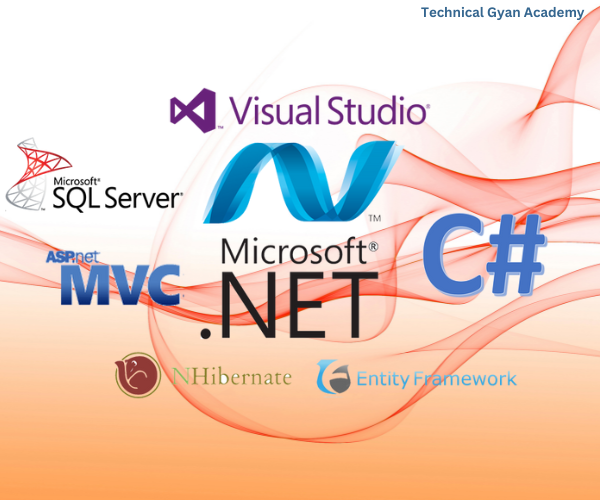
Website Development & HTML Design
- Please wait..

COURSE OVERVIEW
This is a programming based course. It’s a Front-end Development course. You will learn all the commonly required technologies to create a website like: HTML5, CSS, Bootstrap, JQuery, Javascript, Local Server and more…
HTML5
- Introduction to HTML
- HTML Document Structure
- Text Formatting and Multimedia
- Lists and Links
- Forms and Input Elements
- Tables
- Semantic HTML
- HTML5 Audio and Video
- HTML Forms and Input Validation
- HTML Layout and CSS
- Responsive Web Design
- HTML Metadata and SEO
- HTML5 Features
- Web Accessibility
- Web Hosting and Publishing
- Advanced HTML5
CSS
- Introduction to CSS
- CSS Properties and Values
- CSS Layout
- CSS Flexbox
- CSS Grid
- Responsive Web Design
- CSS Transitions and Animations
- CSS Preprocessors (SASS or LESS)
- CSS Best Practices
- CSS Frameworks and Libraries (Bootstrap)
- CSS for Print and Paged Media
- CSS Grid Systems
- Advanced CSS Topics
Javascript
- Introduction to JavaScript
- JavaScript Basics
- JavaScript Objects
- Arrays in JavaScript
- Document Object Model (DOM)
- Functions in Depth
- Asynchronous JavaScript
- Error Handling
- JavaScript and Web APIs
- JavaScript Modules
- Object-Oriented JavaScript
- Regular Expressions
- Practical Projects
JQuery
- Introduction to jQuery
- Selectors and DOM Manipulation
- Events and Event Handling
- Animation and Effects
- Ajax and Data Retrieval
- Forms and Form Validation
- jQuery UI (User Interface)
- Plugins and Extensibility
- Performance and Best Practices
- Error Handling and Debugging
- jQuery Mobile
- Project Development
- Cross-Browser Compatibility
- Deployment and Optimization
- Future Trends and Advanced Topics
- Local Server Setup and Hosting
8th Passed + Basic Computer Operating Knowledge
4 months
- Proficiency in HTML, CSS, and JavaScript: Mastery of the core web development technologies, including HTML for content, CSS for styling, and JavaScript for interactivity.
- Responsive Web Design: Ability to create responsive web layouts that adapt to different screen sizes and devices, enhancing the user experience.
- UI/UX Principles: Understanding of user interface (UI) and user experience (UX) design principles to create visually appealing and user-friendly websites.
- Web Design Frameworks: Proficiency in popular front-end frameworks like Bootstrap, Foundation, or Materialize for efficient web design.
- Cross-Browser Compatibility: Knowledge of techniques to ensure your web applications work consistently across various web browsers.
- Version Control: Familiarity with version control systems like Git and GitHub for collaboration and code management.
- Website Performance Optimization: Ability to optimize web assets for faster loading times, including image compression, minification, and reducing HTTP requests.
- Web Animation: Knowledge of CSS animations and transitions for adding dynamic elements to web pages.
- JavaScript Libraries and Frameworks: Introduction to popular JavaScript libraries (e.g., jQuery) and front-end frameworks (e.g., React, Angular, Vue.js).
- Single-Page Applications (SPAs): Understanding and ability to create SPAs using frameworks like React or Angular.
- Accessibility: Awareness of web accessibility standards (e.g., WCAG) to create inclusive web experiences for all users.
- Front-End Build Tools: Knowledge of build tools like Webpack, Gulp, or Grunt for optimizing and automating front-end workflows.
- Responsive Images: Mastery of responsive image techniques, including the use of srcset and picture elements.
- Web Security: Understanding of web security best practices, such as protecting against cross-site scripting (XSS) and other vulnerabilities.
- Testing and Debugging: Proficiency in debugging web applications and knowledge of testing frameworks (e.g., Jasmine, Jest).
- Web Performance Metrics: Ability to analyze and improve web performance using tools like Lighthouse or Google PageSpeed Insights.
- Portfolio Development: Creation of a professional portfolio of web development projects to showcase your skills to potential employers.
- Job Readiness: Understanding of job roles in front-end development, job search strategies, and interview preparation.
- Freelance Opportunities: Capability to take on freelance web development projects and clients.
- Continuous Learning: Recognition that front-end development is an evolving field and a commitment to staying up-to-date with new technologies and best practices.
Content
Eligibility
Duration
Achievement
Content
HTML5
- Introduction to HTML
- HTML Document Structure
- Text Formatting and Multimedia
- Lists and Links
- Forms and Input Elements
- Tables
- Semantic HTML
- HTML5 Audio and Video
- HTML Forms and Input Validation
- HTML Layout and CSS
- Responsive Web Design
- HTML Metadata and SEO
- HTML5 Features
- Web Accessibility
- Web Hosting and Publishing
- Advanced HTML5
CSS
- Introduction to CSS
- CSS Properties and Values
- CSS Layout
- CSS Flexbox
- CSS Grid
- Responsive Web Design
- CSS Transitions and Animations
- CSS Preprocessors (SASS or LESS)
- CSS Best Practices
- CSS Frameworks and Libraries (Bootstrap)
- CSS for Print and Paged Media
- CSS Grid Systems
- Advanced CSS Topics
Javascript
- Introduction to JavaScript
- JavaScript Basics
- JavaScript Objects
- Arrays in JavaScript
- Document Object Model (DOM)
- Functions in Depth
- Asynchronous JavaScript
- Error Handling
- JavaScript and Web APIs
- JavaScript Modules
- Object-Oriented JavaScript
- Regular Expressions
- Practical Projects
JQuery
- Introduction to jQuery
- Selectors and DOM Manipulation
- Events and Event Handling
- Animation and Effects
- Ajax and Data Retrieval
- Forms and Form Validation
- jQuery UI (User Interface)
- Plugins and Extensibility
- Performance and Best Practices
- Error Handling and Debugging
- jQuery Mobile
- Project Development
- Cross-Browser Compatibility
- Deployment and Optimization
- Future Trends and Advanced Topics
- Local Server Setup and Hosting
Eligibility
8th Passed + Basic Computer Operating Knowledge
Duration
4 months
Achievement
- Proficiency in HTML, CSS, and JavaScript: Mastery of the core web development technologies, including HTML for content, CSS for styling, and JavaScript for interactivity.
- Responsive Web Design: Ability to create responsive web layouts that adapt to different screen sizes and devices, enhancing the user experience.
- UI/UX Principles: Understanding of user interface (UI) and user experience (UX) design principles to create visually appealing and user-friendly websites.
- Web Design Frameworks: Proficiency in popular front-end frameworks like Bootstrap, Foundation, or Materialize for efficient web design.
- Cross-Browser Compatibility: Knowledge of techniques to ensure your web applications work consistently across various web browsers.
- Version Control: Familiarity with version control systems like Git and GitHub for collaboration and code management.
- Website Performance Optimization: Ability to optimize web assets for faster loading times, including image compression, minification, and reducing HTTP requests.
- Web Animation: Knowledge of CSS animations and transitions for adding dynamic elements to web pages.
- JavaScript Libraries and Frameworks: Introduction to popular JavaScript libraries (e.g., jQuery) and front-end frameworks (e.g., React, Angular, Vue.js).
- Single-Page Applications (SPAs): Understanding and ability to create SPAs using frameworks like React or Angular.
- Accessibility: Awareness of web accessibility standards (e.g., WCAG) to create inclusive web experiences for all users.
- Front-End Build Tools: Knowledge of build tools like Webpack, Gulp, or Grunt for optimizing and automating front-end workflows.
- Responsive Images: Mastery of responsive image techniques, including the use of srcset and picture elements.
- Web Security: Understanding of web security best practices, such as protecting against cross-site scripting (XSS) and other vulnerabilities.
- Testing and Debugging: Proficiency in debugging web applications and knowledge of testing frameworks (e.g., Jasmine, Jest).
- Web Performance Metrics: Ability to analyze and improve web performance using tools like Lighthouse or Google PageSpeed Insights.
- Portfolio Development: Creation of a professional portfolio of web development projects to showcase your skills to potential employers.
- Job Readiness: Understanding of job roles in front-end development, job search strategies, and interview preparation.
- Freelance Opportunities: Capability to take on freelance web development projects and clients.
- Continuous Learning: Recognition that front-end development is an evolving field and a commitment to staying up-to-date with new technologies and best practices.
Note - Download brochure for detailed course syllabus.

OTHER COURSES CATEGORIES
All Courses (36)Animation Courses (2)C# .Net Courses (4)Full Stack Development Courses (6)Kids Courses (2)Mobile Apps Development Courses (3)Multimedia Courses (6)NodeJs Courses (5)Non Programming Courses (13)Popular Courses (13)Programming Courses (24)Python Courses (5)ReactJs Courses (3)Short Term Courses (6)Website Development Courses (10)






